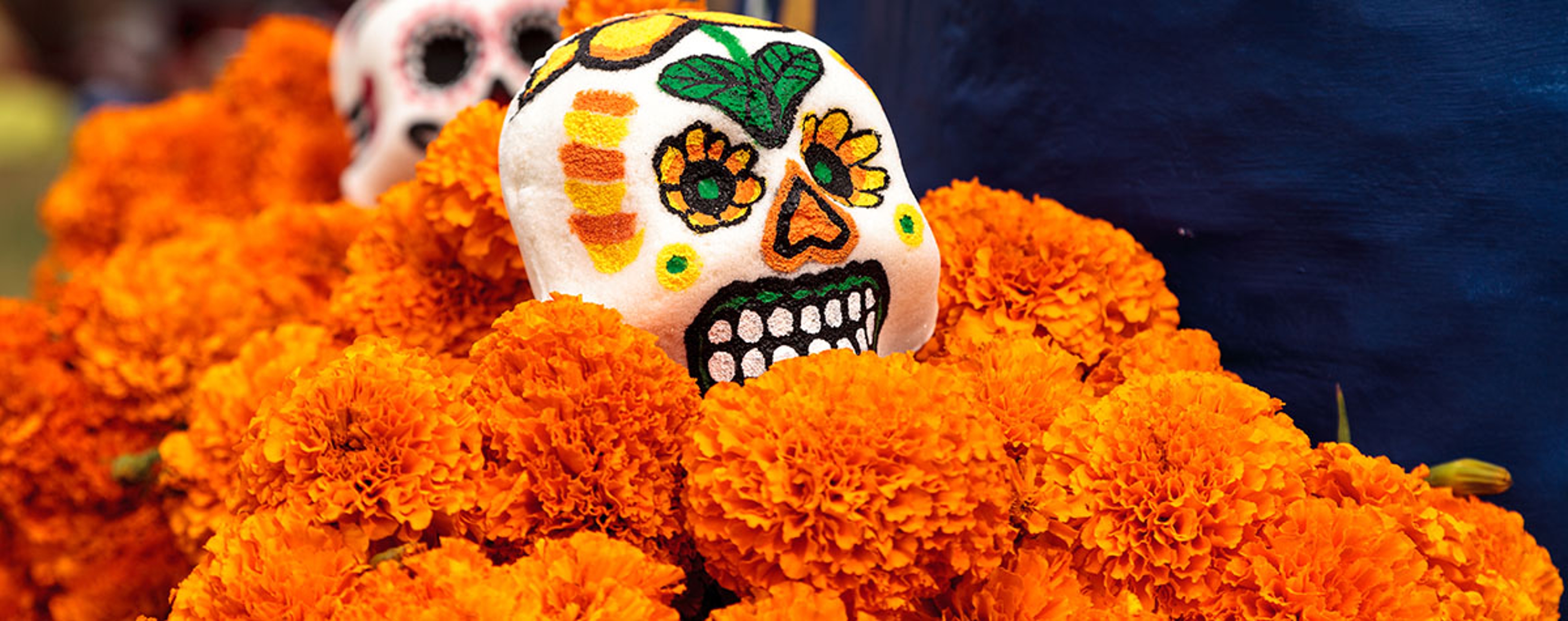Day of the Dead Flowers, Meaning & History
Learn how to incorporate Day of the Dead flowers, arrangements, and decorations into your celebration this year!
Oct 17, 2021
Day of the Dead (Día de los Muertos) is a holiday that is celebrated annually on Nov. 1 and 2 to honor and remember those that have passed on. The holiday resembles All Saints Day and All Souls Day, which are celebrated after Halloween on the Christian calendar.
The Day of the Dead is most notably celebrated in Latin American regions, although it is becoming increasingly popular throughout the United States too.

Why is Día de los Muertos celebrated?
When the Aztecs first began observing this occasion over 3,000 years ago, their ultimate goal was to honor and celebrate the deceased as their spirits returned, not necessarily to mourn those who are no longer with us. While it is definitely still a time of reflection and remembrance, the main focus is to celebrate the lives that our loved ones lived.
Day of the Dead flowers
Cempazuchitl flowers, or marigolds, are considered the Day of the Dead flowers. They have a very distinct smell, and, when paired with the right kind of candle, believers say the souls of the departed return for a brief period of time to enjoy the pleasures of life once more.
Laying cempazuchitl flowers on the altar or at a gravesite isn’t the only way they’re used on the Day of the Dead. On occasion, the cempazuchitl petals are also laid out strategically to guide the spirits back to our world (think of them as being used as a spiritual path or walkway). Since these flowers are said to represent the fragility of life, it’s only natural that they are used to honor those that have passed on to the next chapter of life.
Decorating with Day of the Dead flowers
Decorating for Day of the Dead is one of the most beautiful things about the holiday, and flowers are often a big part of these decorations. Day of the Dead marigolds are often left as an offer from family members to include on their altar and at the grave of their loved ones.
Additional flowers used for Day of the Dead decorations
Although marigolds are the most closely associated flower with the Day of the Dead, other blooms are often used or found at the altars or near the resting pace of the deceased as well to honor deceased loved ones. Other popular Day of the Dead flowers include but are not limited to baby’s breath, hoary stock, cockscomb, gladiolus, and chrysanthemums. Similar to marigolds, these flowers are chosen for a specific reason, such as their colors, scents, and meaning. For example, gladiolus often symbolize remembrance, which makes them an ideal choice for this type of observance.
How is Day of the Dead celebrated?

While it may sound like a rather solemn day, the Day of the Dead is actually quite the opposite. Visit an area where Day of the Dead is observed, and you’ll likely be surrounded by several parties and festivals, where there is always lots of food, especially at the “altar.”
The altar is what living relatives of the deceased typically build in their home and is where they present the spirits of their loved ones with gifts, such as fresh fruits. Day of the Dead celebrators also enjoy snacking on delicious sugar skulls...yum!
One of the most popular ways to celebrate Day of the Dead is by wearing skeleton or skull masks. This tradition has led to skeletons or skulls (or calacas and calaveras) to be the most widely recognized symbols of the holiday.
But skeletons, food, and flowers aren’t the only decorations used on the Day of the Dead. Altar decor also consists of candles, photos, images of religious figures or religious symbols, and even toys for those who were still children or babies at the time of their passing. You may also see items that were valued by the person who has passed placed on the altar.
Traditional dress is also common for Día de los Muertos. You may find celebrants wearing various types of noisemakers, a tradition that stems from the idea that music is essential to creating a celebratory atmosphere. For those celebrations that take place in the United States, you will frequently see faces painted with the sugar skull as the foundation for the design. However, some celebrators choose to paint only half their face with skull and skeleton characteristics. That's because Día de los Muertos recognizes that death is a natural part of life, and, as a result, those that celebrate choose to represent both life and death, and their connection to each other.





